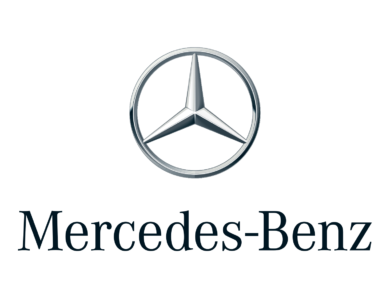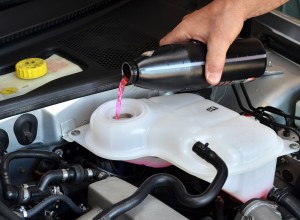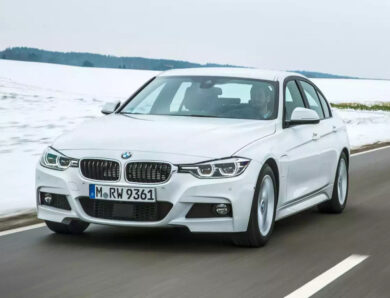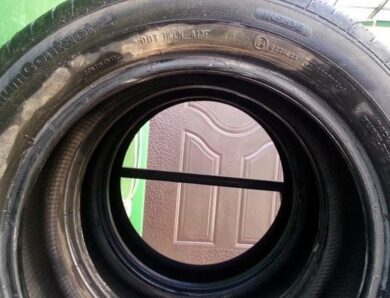Brushless DC motor: specifics, advantages, device device
A direct current motor is called an electric motor, which is powered by direct current. If necessary, get a high-torque engine with relatively low revolutions. Structurally, Inrunners are simpler because of that, that a stationary stator can serve as a housing. Fasteners can be mounted to it. In the case of Outrunners, the entire exterior rotates. The motor is mounted on a stationary axis or stator parts. In the case of a motor-wheel, the fastening is carried out by the stationary axis of the stator, the wires are wound to the stator through a hollow shaft of fewer 0,5 mm.
Types of electric motors
There are following types of DC motors:
-
with disturbance by means of permanent magnets;
- with a series connection of the armature and excitation windings;
- with a parallel connection of the armature and excitation windings;
- with a mixed connection of the armature and excitation windings;
- valve engine (brushless direct current motor), made using a closed system; this type of motor uses an inverter (power semiconductor converter), coordinate converter and DPR (rotor position sensor).
An alternating current motor is called an electric motor, which is powered by alternating current. There are the following types of AC motors:
-
hysteresis motor;
- valve jet engine;
- asynchronous electric motor with a frequency of rotation of the rotor, which differs from the rotation frequency is created by the magnetic field voltage;
- synchronous electric motor with the frequency of rotation of the rotor, coinciding with the rotation frequency is created by the magnetic field voltage.
There is also UKD (universal collector engine) with the function of the operating mode as on the variable, as well as on direct current.
Another type of motor is a stepper motor with a finite number of rotor positions. A certain specified position of the rotor is fixed by applying power to the necessary corresponding windings. When the supply voltage is removed from one winding and its transfer to others, the process of transition to another position occurs.
An AC motor when powered by an industrial network usually does not allow to reach a rotation frequency of more than three thousand revolutions per minute. For this reason, if it is necessary to obtain higher frequencies, a collector motor is used, the additional advantages of which are lightness and compactness while maintaining the necessary power.
Sometimes a special transmission mechanism called a multiplier is also used, which changes the kinematic parameters of the device to the required technical indicators. Manifold assemblies sometimes occupy up to half of the engine space, therefore, AC motors are reduced in size and made lighter in weight by using a frequency converter, and sometimes due to the presence of a network with an increased frequency to 400 Hz.
The resource of any AC asynchronous motor is significantly higher than that of a collector. It is determined by the state of insulation of windings and bearings. A synchronous motor when using an inverter and a rotor position sensor is considered an electronic analogue of a classic collector motor, which supports operation with direct current.
Brushless direct current electric motor. General information and device device
A brushless DC motor is also called a three-phase valve motor. It is a synchronous device, the principle of operation of which is based on self-synchronized frequency regulation, thanks to which vector control takes place (pushing off from the position of the rotor) magnetic field of the stator.
Electric motor controllers of this type are often powered by constant voltage, from which they got their name. In the English-language technical literature, the valve electric motor is called PMSM or BLDC.
The brushless motor was created primarily to optimize any DC motor as a whole. To the executive mechanism of such a device (especially to a high-speed micro-drive with precise positioning) very high demands were made.
It, apparently, and led to the use of such specific direct current devices, brushless three-phase motors, also called BDPT. By their design, they are almost identical to AC synchronous motors, where the rotation of the magnetic rotor occurs in a conventional charged stator in the presence of three-phase windings, and the number of revolutions depends on the voltage and loads of the stator. Based on the determined coordinates of the rotor, different stator windings are switched.
Brushless DC motors can exist without any separate sensors, however, sometimes they are present on the rotor, example, Hall Sensor. If the device works without an additional sensor, then the stator windings perform the function of a fixing element. Then the current arises due to the rotation of the magnet, when the rotor induces emf in the stator winding.
If one of the windings is turned off, then that signal will be measured and further processed, which was given, however, such a working principle is impossible without a professor of signal processing. But for reversing or braking such an electric motor, a bridge circuit is not required - it will be enough to apply control pulses to the stator windings in the reverse sequence.
VD (valve engine) the inductor in the form of a permanent magnet is located on the rotor, and the armature winding is on the stator. Based on the position of the rotor, the supply voltage of all windings of the electric motor is formed. When used in such collector designs, its function will be performed by a semiconductor switch in the valve engine.
The main difference between synchronous and valve motors is self-synchronization of the latter with the help of DPR, which determines the proportional frequency of rotation of the rotor and the field.
Most often, the DC motor without a collector is used in such areas:
-
freezing or refrigerating equipment (compressors);
- electric drive;
- air heating systems, its air conditioning or ventilation.
Stator
This device has a classic design and resembles the same device of an asynchronous machine. The composition includes a core made of copper winding (placed along the perimeter in grooves), which determines the number of phases, and body. Usually, sine and cosine phases are sufficient for rotation and self-starting, however, often, a valve engine is made three-phase and even four-phase.
Electric motors with reverse electromotive force are divided into two types according to the type of arrangement of turns on the stator winding:
- sinusoidal shape;
- trapezoidal shape.
In the corresponding types of the motor, the electric phase current also changes according to the sinusoidal or trapezoidal feeding method.
Rotor
Usually, the rotor is made of permanent magnets with the number of pairs of poles from two to eight, which, in turn, alternate from north to south or vice versa.
Ferrite magnets are considered the most common and cheapest for making a rotor, but their disadvantage is a low level of magnetic induction, therefore, devices are now coming to replace such material, created from alloys of various rare earth elements, because they can provide a high level of magnetic induction, what, in turn, allows to reduce the size of the rotor.
DPR
A rotor position sensor provides feedback. According to the principle of operation, the device is divided into the following subspecies:
- inductive;
- photoelectric;
- hall effect sensor.
The last type gained the most popularity due to its almost absolute inertialess properties and the ability to get rid of the delay in the feedback channels depending on the position of the rotor.
Management system
The control system consists of power keys, sometimes also from thyristors or power transistors, which include an isolated shutter, leading to the collection of current inverter or voltage inverter. The process of managing these keys is implemented most often by using a microcontroller, which requires a huge number of computational operations to control the engine.
The principle of operation
Робота двигуна полягає в тому, що контролер комутує певну кількість обмоток статора таким чином, що вектор магнітних полів ротора і статора ортогональны. За допомогою ШІМ (широтно-імпульсної модуляції) контролер здійснює управління протікає через двигун струмом і регулює момент, що чинить вплив на ротор. Напрямок чинного цього моменту визначає відмітка кута між векторами. При розрахунках використовуються електричні градуси.
Комутацію слід проводити таким чином, щоб Ф0 (потік збудження ротора) щодо потоку якоря постійним. При взаємодії такого потоку збудження і якоря формується обертаючий момент М, який прагне розгорнути ротор і паралельно забезпечити збіг порушення і потоку якоря. Однак під час повороту ротора відбувається перемикання різних обмоток під впливом датчика положення ротора, в результаті чого потік якоря розгортається у напрямку до наступного кроку.
У такій ситуації результуючий вектор зсувається і стає нерухомим по відношенню до потоку ротора, what, in turn, створює необхідний момент на валу електродвигуна.
Управління двигуном
Контролер бесколлекторного електродвигуна постійного струму здійснює регулювання діє на ротор моменту, змінюючи величину широтно-імпульсної модуляції. Комутація при цьому контролюється і здійснюється за допомогою електроніки, на відміну від звичайного щіткового двигуна постійного струму. Також поширеними є системи управління, які для робочого процесу реалізують алгоритми широтно-імпульсної модуляції та широтно-імпульсного регулювання.
Двигуни на векторному керуванні забезпечують найширший з усіх відомих діапазонів для регулювання власної швидкості. Регулювання цієї швидкості, як і підтримання потокозчеплення на необхідному рівні відбувається завдяки перетворювача частоти.
Особливістю регулювання електроприводу, заснованого на векторному керуванні, є наявність контрольованих координат. Вони знаходяться в нерухомій системі і перетворюються у обертову, виділяючи пропорційне контрольованими параметрами вектора постійне значення, завдяки чому формується керуючий вплив, а потім зворотний перехід.
Незважаючи на всі переваги такої системи, вона супроводжується і недоліком у вигляді складності управління пристроєм для регулювання швидкості в широкому діапазоні.
Advantages and disadvantages
В наш час в багатьох галузях промисловості такий тип двигуна користується величезним попитом, адже безколекторний електродвигун постійного струму об’єднав в собі чи не всі найкращі якості безконтактних та інших типів двигунів.
Незаперечними перевагами вентильного двигуна є:
- широкий діапазон зміни частоти обертання і легкість в його регулювання;
- енергетичні показники неймовірно високі – ККД становить більше 90%;
- безпека при використанні в агресивному середовищі або у вибухонебезпечних місцях;
- перевантажувальна здатність вкрай велика;
-
при роботі в режимі перевантаження електродвигуна спостерігається низький перегрів;
- відсутність вимагають техобслуговування вузлів (у звичайному вентильному двигуні);
- безконтактність;
- точність позиціонування;
- динаміка і високу швидкодію;
- пусковий момент дуже великий;
- можливість використання в різних режимах (руховому і генераторному);
- high reliability;
- long service life;
- відсутність ковзних контактів;
- високий ресурс роботи.
Незважаючи на вагомі позитивні моменти, безколекторному електродвигуні постійного струму також є кілька недоліків:
-
використання в конструкції ротора дорогих матеріалів, in particular, постійних магнітів, призводить до високої вартості пристрою;
- ресурс електронних вузлів обмежений;
- колектор зношується досить швидко, що обмежує термін служби пристрою;
- колекторно-щіткові вузли вимагають періодичного профілактичного обслуговування (у безколекторному двигуні постійного струму);
- електродвигуну властива складна для обивателя система управління.
Виходячи з вищевикладеного та нерозвиненості сучасної електроніки в регіоні, багато хто все ще вважає доцільним використання звичайного асинхронного двигуна з наявністю перетворювача частоти.
Трифазний безколекторний електродвигун постійного струму
Такий тип двигуна володіє чудовими характеристиками, особливо при здійсненні управління за допомогою датчиків положення. Якщо момент опору варіюється або зовсім невідомий, а також за необхідності досягнення більш високого пускового моменту використовується управління з датчиком. Якщо датчик не використовується (usually, у вентиляторах), управління дозволяє обійтися без провідного зв’язку.
Особливості управління трифазним безколекторним двигуном без датчика положення:
-
розташування ротора визначають за допомогою диференціального АЦП (аналого-цифрового перетворювача);
- струмовий перевантаження визначають також за допомогою АЦП (аналого-цифрового перетворювача) або аналогового компаратора;
- регулювання швидкості виконують за допомогою приєднаних до нижніх драйверам ШІМ-каналів;
- рекомендованими мікроконтролерами вважаються AT90PWM3 і ATmega64;
- підтримуваними комунікаційними інтерфейсами (інтерфейсами зв’язку) є УАПП, SPI і TWI.
Особливості управління трифазним безколекторним двигуном з датчиком по положенню на прикладі датчика Холла:
- регулювання швидкості виконують за допомогою приєднаних до нижніх драйверам ШІМ-каналів;
-
вихід кожного з датчиків Холла підключають до відповідної лінії вводу-виводу мікроконтролера, налаштованої при змінах стану на генерацію переривань;
- підтримуваними комунікаційними інтерфейсами (інтерфейсами зв’язку) є УАПП, SPI і TWI;
- струмовий перевантаження визначають за допомогою АЦП (аналого-цифрового перетворювача) або аналогового компаратора.
Conclusion
Безколекторний електродвигун постійного струму має масу переваг і стане гідним вибором для використання як спеціалістом, так і простим обивателем.




